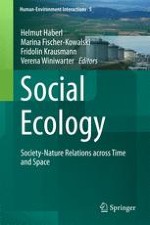2016 | OriginalPaper | Buchkapitel
13. Livestock Grazing, the Neglected Land Use
verfasst von : Karl-Heinz Erb, Tamara Fetzel, Thomas Kastner, Christine Kroisleitner, Christian Lauk, Andreas Mayer, Maria Niedertscheider
Erschienen in: Social Ecology
Aktivieren Sie unsere intelligente Suche, um passende Fachinhalte oder Patente zu finden.
Wählen Sie Textabschnitte aus um mit Künstlicher Intelligenz passenden Patente zu finden. powered by
Markieren Sie Textabschnitte, um KI-gestützt weitere passende Inhalte zu finden. powered by
